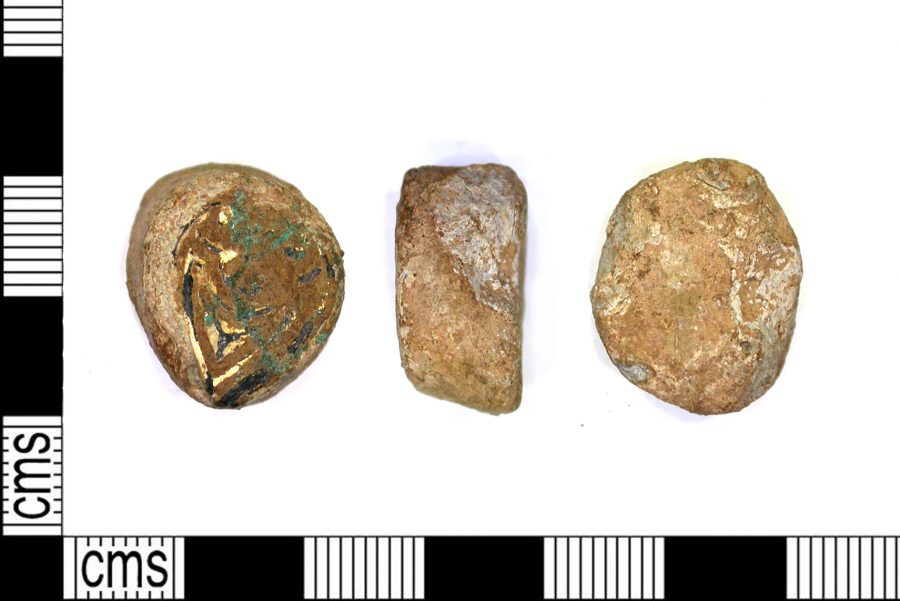
Description
Gilded Lead-Alloy Weight (LEIC-C6C96A)
A lead-alloy weight with gilded copper insert found near Normanton, Lincolnshire
The inset decoration of this weight is probably a reused fragment of an Irish or Anglo-Saxon object. Its importation and re-working is likely the result of Viking intervention. The distinction of weights by embedded objects or other embellishments in various media is a widely recognised feature of some early medieval weights.
Weights are an important form of evidence for Viking Age commerce and the use of standards across the different economic systems within which Vikings were integrated. Many of the weights discovered, particularly ones in Ireland and those of Arabic type, suggest that a standardized system of weights existed in some areas. These standard weights, alongside standard values of silver, are what allowed the bullion economy of Viking-occupied areas to function. A bullion economy was a barter economy that relied on the exchange of set amounts of precious metal in various forms, such as arm-rings or coins, for tradeable goods, such as food or textiles. Each merchant would have brought their own set of weights and scales to a transaction to make sure that the trade was conducted fairly.
Object Type
- Weight
Date
- circa 800 — 1100
Ascribed Culture
Original/Reproduction
- Original
Material
Collection
- Viking Objects
Current Location
- Private Ownership
Keywords
- bullion, copper, Economy, gilded, Irish, lead_alloy, Lincolnshire, Portable_Antiquities_Scheme, trade, Viking, weight
Further information
You can see the original at Private Ownership.
Acknowledgements
(c) Portable Antiquities Scheme, CC BY-SA 2.0
References
Kilger, Christoph. “Hack-silver, weights and coinage: the Anglo-Scandinavian bullion coinages and their use in late Viking-Age society.” In James Graham-Campbell et al. ed. Silver Economies, Monetisation and Society in Scandinavia, AD 800-1100. (Aarhus: Universitetsforlag, 2011), pp. 259-280.
